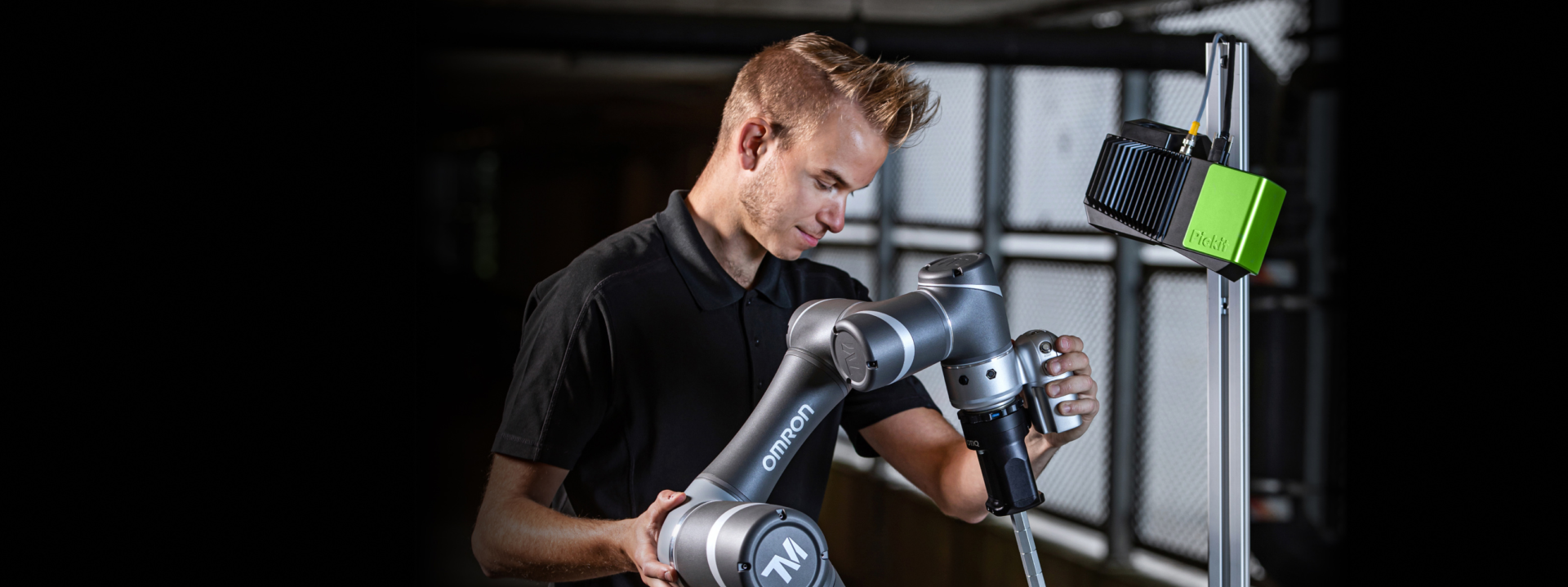As visionary as vision can be
Industrial automation has already taken giant steps since the first robotic arms entered factories. Today, the Flemish start-up Pick-it, pushes the boundaries of the possible by giving these robots eyes, letting them look and anticipate on the situation. Billion-dollar businesses like GKN, Continental and Apple are fans.

Automation is inevitable. In production lines worldwide, human hands are replaced by the firm, metal grip of robots. Yet, we should not fear this evolution, but rather look at it as a step towards the future. The Flemish start-up Pick-it embraces this tendency and explores the many opportunities that come with it. By giving robotic arms eyes, they metamorphose the production industry as we know it. “Half of the robots that are sold are used to pick up something and place it somewhere else,” Pick-it CEO Peter Soetens explains. “To do this with ‘blind robots’, the pieces must be on the exact same spot for the system to function. The moment you give a robot eyes, it can trace the object by itself, diminishing the chance of errors on the production line.”
“AI is not that scary”
With its modest size, the Pick-it camera does not look like the powerful feat of engineering that it is. Yet, its compact design is one of its many strengths. “Our product is a plug-and-play device. You can easily attach it to any robot arm you prefer or already have. With it, comes a processor on which all necessary software is pre-installed. It doesn’t take an engineer’s eye to get started.” For the machine to learn which items to pick up, it relies on two of the biggest technical innovations of the last decade: 3D cameras and artificial intelligence. The Pick-it need only see an object once before the artificial intelligence can recognise it out of a bunch of other objects. CAD-files and mathematical formulas are no longer required.
This application of artificial intelligence is light years away from the popularly fictionalised doom scenarios of robots becoming autonomous and taking over the planet. “To everybody who fears artificial intelligence: it isn’t as scary as you might think,” Soetens stresses. “AI is a revolutionary technology in pattern recognition. It allows computers to distinguish patterns by the means of millions of reference points. During the last decade, this technology has become very trustworthy, allowing us to use it in self-driving cars and our Pick-it camera.”
The optimal collaboration between the camera and the software relies on two factors: the image must be sharp, and the object fully showed. Unfortunately, therein lies a paradox. “The wider we make the image, the more quality we lose. We, therefore came up with three different models to adapt to each situation.” The Pick-it L specialises in recognising big items from a larger distance, while the Pick-it M deals with medium-sized products from up close. Their latest addition, the Pick-it M-HD, is suited for medium-sized as well as smaller products since its high-definition camera records a sharper image from a distance. “Though this option is a bit more expensive, it is very popular. Many companies prefer investing in the most future-proof solution.”
“Talent beats seniority”
While rooted in the Flemish city of Leuven, Pick-it is half a world removed from Silicon Valley. Yet, that does not seem to bother Soetens. “The Benelux might not be the epicentre of production companies today, but robotics is an international sector. We export beyond borders without compromising our customer service.” That, they prove, by having big players like GKN, Continental and Apple in their client base. Yet, the Pick-it technology is also suited for smaller companies. “You don’t need to be an engineer to work with Pick-it. We provide the easiest-to-use system on the market. Nonetheless, we keep improving and simplifying our products to make them even more accessible. Smaller businesses need to catch up with the big boys if they want to compete with growing markets like China. Accessible robotics might be able to help them with it.”
Due to its major growth in just two years, the international business world has high hopes for Pick-it. That, however, does not daunt Soetens. “The only thing a fast-growing company like ours has to fear is that the growth will stop. The only way to prevent this is to work with the best people in the business. Talent beats seniority on this one. I prefer working with highly talented, younger people, rather than hiring staff solely based on their track record.” Their human resources are Pick-it’s main assets. Though they produce a state-of-the-art automation product, their cameras are still 100 per cent assembled by hand. “To guarantee exquisite quality, we produce everything manually. Yet, if we develop our Pick-it even more, we will soon be able to produce equally qualitative products in a partially automated factory.”
by Arne Adriaenssens for Discover Benelux Magazine.
